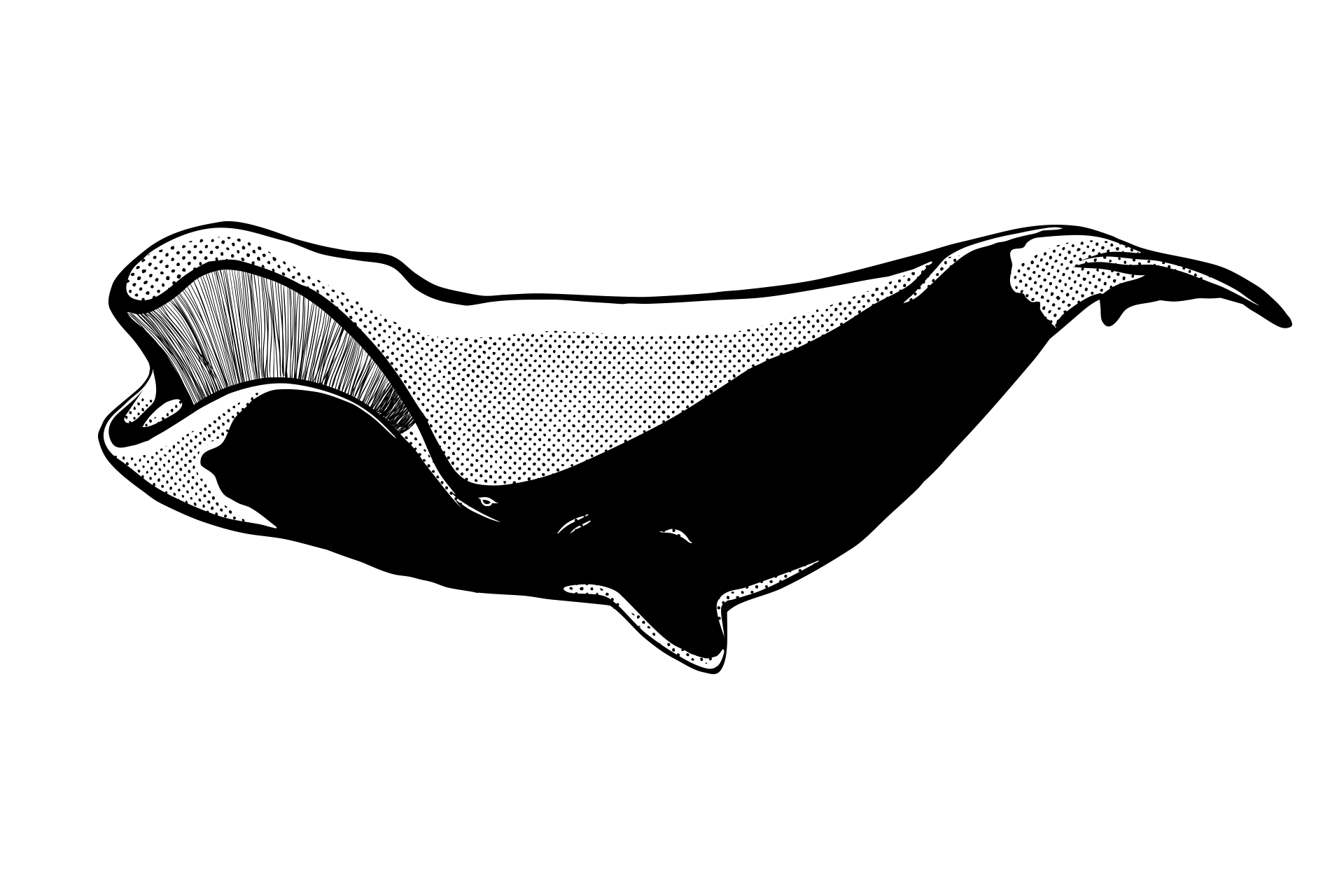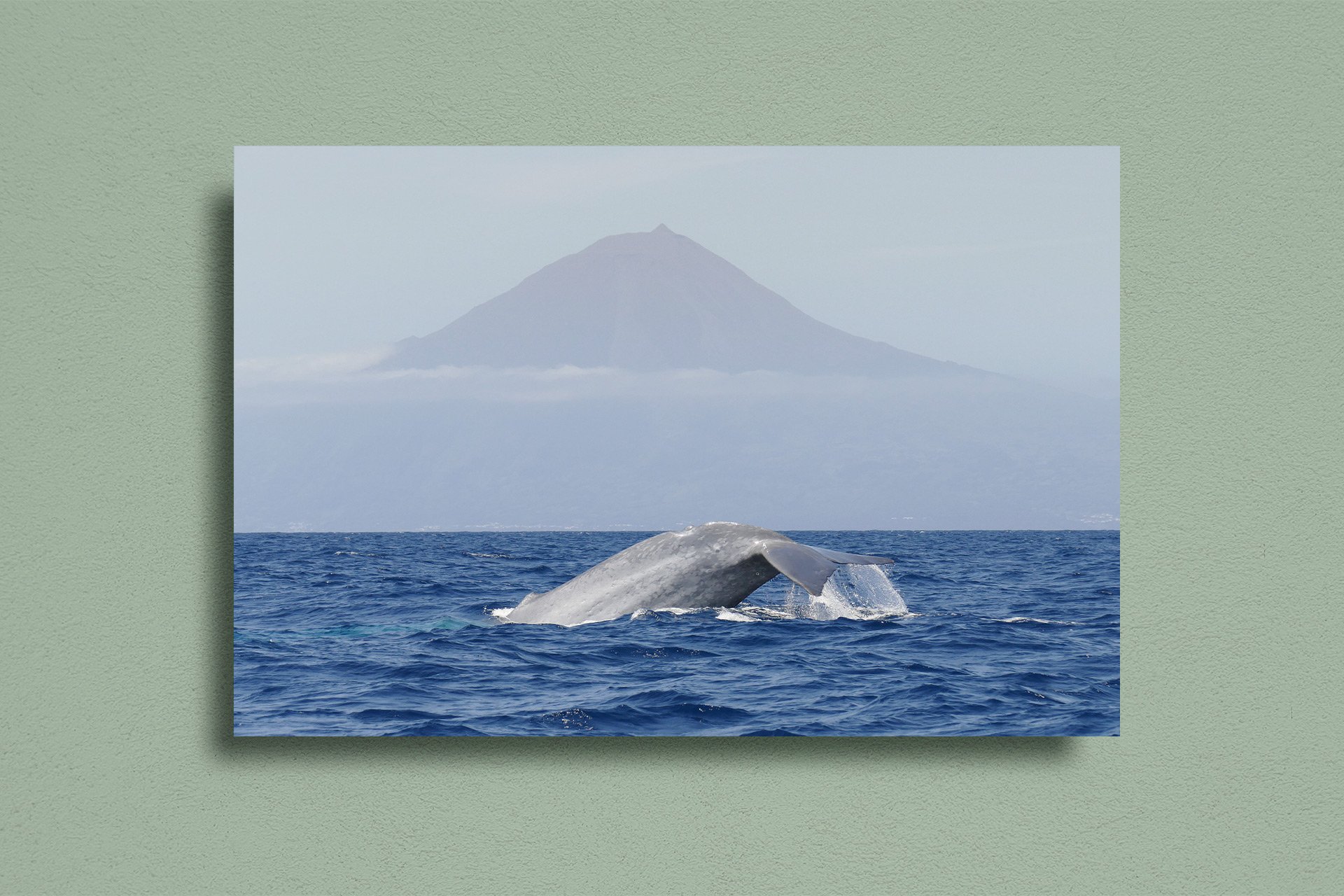GLATTWALE
Die dicksten aller Wale. In Südafrika, AuStralien und Argentinien kann man sie springen sehen.
Foto: iStock
REVIEW: Glattwale
Glattwale können bis zu 200 Jahre alt werden – gut möglich, dass heute noch Tiere umher schwimmen, die bereits von den Walfängern aus »Moby Dick« gejagt wurden. Gerade beim Glattwal war der Walfang besonders exzessiv.
Glattwale haben von allen Walen am meisten unter dem Walfang gelitten. Sie sind langsame Schwimmer, Menschen gegenüber aufgeschlossen, bleiben am liebsten nah an der Küste und haben eine so dicke Speckschicht, dass sie nicht einmal untergehen, wenn sie getötet wurden.
Das sind aus Sicht der Walfänger höchst praktische Eigenschaften – es ist daher kein Wunder, dass sie dem Glattwal den Namen »The Right Whale« (to hunt) gegeben haben. Aufgrund der exzessiven jahrhundertelangen Jagd gibt es leider kaum noch Glattwale, dabei sind sie auch aus Whale-Watching-Sicht ohne Frage genau die richtigen Wale.
Es gibt drei verschiedene Arten – Nordkaper, Südkaper, Grönlandwale – die sich aber so sehr ähneln, dass sie gemeinsam als Glattwale bezeichnet werden. Die drei Arten leben in verschiedenen Gebieten und begegnen sich praktisch nie.
Das Auffälligste an Glattwalen: ihr enormes Gewicht. Glattwale bringen bis zu 100 Tonnen auf die Waage und sind damit gemeinsam mit Finnwalen die zweitschwersten Wale überhaupt (nach den Blauwalen). Im Unterschied zu diesen beiden sind vor allem Südkaper allerdings begeisterte Springer, die es tatsächlich spielend schaffen, einen Großteil ihres massigen Körpers aus dem Wasser zu hieven. Der anschließende Aufprall ist so laut, dass man ihn noch in einer Entfernung von einem Kilometer hören kann.
„In der Speckschicht eines von kanadischen Inuit erlegten Grönlandwals hat man Spitzen von Steinharpunen aus dem 19. Jahrhundert entdeckt – was nahelegt, dass Gröndlandwale mehr als 200 Jahre alt werden können.“
Glattwale bestehen zu einem Großteil aus Fett: Ihre Speckschicht kann bis zu 70 cm dick werden und bis zu 40 Prozent des Gesamtgewichts ausmachen – 40 Tonnen Speck! Dabei isoliert diese Schicht so gut, dass die Temperatur eines seit mehreren Tagen toten Glattwals noch immer über 30°C betragen kann.
Um ihr Gewicht zu halten, sind Glattwale den ganzen Tag lang nur mit einem einzigen Thema beschäftigt: Fressen, und zwar mit möglichst wenig Aufwand. Ähnlich wie Blauwale schwimmen Glattwale einfach mit weit aufgerissenem Maul herum und schöpfen dabei mit ihren vier Meter langen Barten (Rekord!) Millionen kleiner Krebse ab.
Das Faszinierendste an Glattwalen: Sie können unfassbar alt werden. In der Speckschicht eines von kanadischen Inuit erlegten Grönlandwals hat man Spitzen von Steinharpunen aus dem 19. Jahrhundert entdeckt – was nahelegt, dass Gröndlandwale mehr als 200 Jahre alt werden können.
Damit sind sie die langlebigsten Wirbeltiere überhaupt (Platz zwei: Riesenschildkröten mit ca. 180 Jahren). Es ist also sehr gut möglich, dass heute noch Grönlandwale herum schwimmen, die bereits 1851 bejagt wurden, als gerade Melvilles »Moby Dick« erschienen ist. Was für eine Zeitreise.
Der Grönlandwal ist der arktische Verwandte der Nord- und Südkaper. Charakteristisch für alle ist die fehlende Rückenfinne. Und der extrem massige Körper samt garagengroßem Maul.
Weitere tolle Rekorde: Südkaper haben die größten Hoden im gesamten Tierreich! Pro Paar bringen sie glatt eine Tonne auf die Waage.
Südkaper sind übrigens auch die einzigen Glattwale, die für Whale-Watching-Touren in Frage kommen: Bei den Nordkapern haben nur sehr wenige den exzessiven Walfang überlebt, zudem erholen sich die Bestände nur extrem langsam, so dass die Aussichten für den Nordkaper insgesamt sehr schlecht sind – weltweit gibt es wahrscheinlich nur noch 500 Tiere.
Bei den Grönlandwalen sieht es etwas besser aus, allerdings leben sie so weit nördlich und stets direkt an der Packeisgrenze, dass man sie touristisch kaum erreicht. Deutlich einfacher ist es bei den Südkapern: Hier hat man vor allem in Argentinien, Südafrika und an der Südküste Australiens recht gute Chancen.
Das weltweit wahrscheinlich bekannteste, beliebteste und am meisten geteilte Wal-Foto, auf dem ein sehr, sehr kleiner Mensch neben einem sehr, sehr großen und massigen Wal am Meeresgrund steht, zeigt übrigens einen Südkaper, fotografiert von Brian Skerry.
Foto: Shutterstock
GRÖSSE
Nord- und Südkaper werden ca. 11 bis 18 Meter, Grönlandwale etwas größer. Gewicht: bis zu 100 Tonnen.
FARBE
Grauschwarz, manchmal auch braun mit hellen Flecken an Unterseite und Unterkiefer. Nord- und Südkaper tragen dicke Schwielen und Pocken am Kopf, Grönlandwale nicht.
FORM
Gedrungener, rundlicher Körper mit riesigem Kopf, der fast ausschließlich aus dem stark gebogenen Maul besteht. Der Kopf macht bis zu 1/3 der Körperlänge aus.
BLAS
Mittelhoher, V-förmiger Blas, der ca. 4 Meter in zwei Säulen nach oben schießt.
FINNE
Alle drei Glattwal-Arten haben keine Rückenfinne.
FLUKE
Spitz gezackte, konkave Fluke. Bis zu 7 Meter breit - ca. 1/3 der Körperlänge.
VERHALTEN
Sehr langsame Schwimmer. Trotz ihres massigen Körpers springen Grönlandwale manchmal, Nord- und Südkaper sogar oft.
TAUCHGÄNGE
Meist 1 bis 3 Minuten an der Oberfläche, dann 5 bis 20 Minuten unter Wasser, kann aber auch über eine Stunde tauchen.
BESTAND
Wenige Hundert Nordkaper, ca. 7.500 Südkaper, 6.000 bis 12.000 Grönlandwale.
Foto: Shutterstock
CHECKLISTE: Glattwale
Glattwale zu beobachten, kann sehr unterhaltsam sein: Sie springen oft bis zu zehn Mal hintereinander oder machen Kopfstand und nutzen ihre Fluke als Segel.
Meist sind 1 bis 6 Tiere gemeinsam unterwegs, manchmal begegnet man aber auch Gruppen von 20 bis 50 Tieren. Südkaper sind verspielte, neugierige Tiere, die oft nahe an die Boote heran kommen. Und sie können trotz ihrer massigen Erscheinung sehr akrobatisch sein.
Wenn Südkaper springen, wuchten sie ihren massigen Körper zu ca. 1/2 bis 2/3 aus dem Wasser und krachen nach einer leichten Drehung mit lautem Platsch auf den Rücken. Manchmal springen Südkaper bis zu 10 Mal hintereinander. Mitunter machen sie auch einen Kopfstand und nutzen ihre Fluke als Segel. Oft schlagen sie auch mit Flippern oder Fluke auf das Wasser. Südkaper zu beobachten, kann sehr unterhaltsam sein.
„Der Blas eines Glattwals schießt in zwei Säulen gut vier Meter in die Höhe. Diese typische V-Form lässt sich allerdings nur von hinten gut erkennen.“
Meist sind Glattwale für 1 bis 3 Minuten an der Oberfläche, dabei machen sie 4 bis 6 Atemzüge für Tauchgänge mit bis zu 20 Minuten. Beim Auftauchen sieht man zuerst den hohen, V-förmigen Blas.
Beim Grönlandwal liegt das Blasloch auf einem Höcker, dadurch sieht man an der Oberfläche zwei unterbrochene Buckel – Kopf und Rücken. Beim Nord- und Südkaper liegt das Blasloch nicht so erhöht, hier sieht man an der Oberfläche einen durchgehenden Körper.
Nach ein paar Atemzügen verschwindet der Kopf unter der Oberfläche, und der Rücken wird in einem großen Bogen gebeugt. Je nach Tiefe des Tauchgangs wird die Fluke gehoben, wobei sie bei Nord- und Südkapern oft etwas seitlich gedreht wird.
Foto: iStock
WO UND WANN: Glattwal
Es ist sehr unwahrscheinlich, jemals einem Nordkaper (zu wenige) oder Grönlandwal (zu weit nördlich) zu begegnen. Bei Südkapern dagegen hat man an einigen Orten recht gute Chancen.
Gröndlandwale leben im Nordpolarmeer, immer nah am Eisrand und nur selten etwas weiter weg vom Packeis. Sie sind vor allem rund um Grönland, in der Hudson Bay, dem Beringmeer, der Tschuktschen-See, der Beaufort-See und dem Ochotskischen Meer zu finden. Die Population Spitzbergens ist fast ausgestorben.
Es gibt kurze saisonale Wanderungen abhängig von der Eisbildung (im Sommer nordwärts, im Winter südwärts). Um Grönlandwalen zu begegnen, muss man sich also entweder im Sommer sehr, sehr weit nach Norden aufmachen – oder im Winter, wenn die Eisgrenze deutlich weiter südlich verläuft, im relativ gut erreichbaren Westen Grönlands sein Glück versuchen.
Der ideale Begleiter für eure nächste Walreise: Im Shop findet ihr unsere TRAVEL NOTES in fünf tollen Farben – mit den wichtigsten Wal-Infos für unterwegs und ganz viel Platz für eigene Notizen, Beobachtungen und Erinnerungen. Jetzt bestellen!
Nordkaper leben zwischen 25° und 60° Nord. Die meisten der wenigen Hundert Verbliebenen leben im Nordwestatlantik vor den Küsten Kanadas und der USA. Die Chancen, ihnen zu begegnen, sind extrem gering – immer wieder mal werden sie vor der Küste New Englands und auch im kanadischen St. Lawrence gesehen.
Südkaper leben zwischen 20° und 55° Süd. Sie unternehmen regelmäßige Wanderungen zwischen ihren Nahrungsgründen in den kälteren antarktischen Gewässern, wo sie den Südsommer verbringen, und den wärmeren Paarungsgebieten weiter nördlich.
Einige hundert Südkaper treffen jeden Winter vor der argentinischen Valdes Peninsula und den Küsten Südafrikas, Südaustraliens und Neuseelands ein. Wichtige Paarungs- und Geburtsplätze liegen küstennah vor Australien, Südafrika und Südamerika.
Eine der bekanntesten Gegenden, um Südkaper zu beobachten, ist Hermanus in Südafrika. Hier kann man sie an vielen Stellen sogar ziemlich gut von Land aus sehen.
Noch mehr Wale
〰️
Noch mehr Wale 〰️
Whaletrips Shop
Über den Wal, die Welt und das Staunen
Das Beste aus zehn Jahren Walfahrt. Bei uns im Whaletrips-Shop auch mit persönlicher Widmung nach Wunsch!
Whaletrips Shop
Unsere Wale als Karten und Sticker
Farbenfroh, schwarz-weiß illustriert, zum Aufkleben: Unsere Wale gibt es auch als Sticker- und Grußkarten-Set!
Whaletrips Shop
Notizhefte: Unsere Notes und Travel Notes
Die idealen Begleiter für eure nächste Walfahrt: in fünf tollen Farben im Whaletrips-Shop erhältlich!
Whaletrips Shop
Elegante Fine Art Prints für Zuhause
Unsere beliebtesten Motive gibt es auch als edle Fine Art Prints für Zuhause. Verschönern jede Wand!











